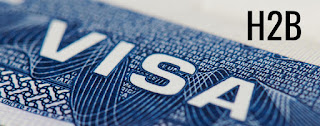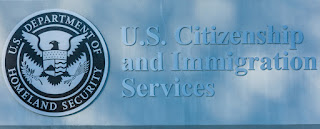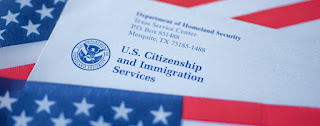Introduction
On November 12, 2019, the Supreme Court of the United States heard oral arguments in Department of Homeland Security v. Regents of the University of California, Docket No. 18-587. The Court is reviewing two issues:
- Whether the Department of Homeland Security's (DHS's) decision to wind down DACA is judicially reviewable; and
- Whether the DHS's decision to wind down the DACA program is lawful.
The DHS initially rescinded the memorandum implementing DACA in 2017, arguing that the program itself was illegal and that the rescission of DACA was in accord with DHS policy. This attempt to end DACA was enjoined by several Federal district courts. These injunctions remained in place despite DHS's attempt to subsequently provide a more detailed explanation for its decision in a second rescission memorandum issued by former Secretary Kirstjen Nielsen. The Supreme Court agreed to review the issue on appeal from the decision of the United States Court of Appeals for the Ninth Circuit. The Court consolidated the case with McAleenan v. Vidal, No. 18-589 (Second Circuit) and Trump v. NAACP, No. 18-588 (District Court for the District of Colombia), which involve similarly adverse decisions for the Trump Administration.
The Petitioner's oral arguments (the government) were presented by Noel J. Francisco, the Solicitor General of the United States. The oral argument time for the Respondents was split between the private Respondents and the state Respondents. Theodore B. Olson represented the private Respondents while Michael J. Mongan, the Solicitor General of San Francisco, California, represented the state respondents.
In this article, we will examine the key points from the oral arguments in the DACA recession cases. To learn more about DACA and the DACA rescission generally, please see our updated article on the subject [see article].
You may read the entire oral argument for yourself here [PDF version]. We will include page cites to the transcript in our discussion of the oral arguments in order that you may follow along and find the original quotes from the oral arguments.
Petitioner's Oral Argument: Solicitor General of the United States, Noel J. Francisco
The Solicitor General began his oral arguments by articulating the Government's position on the two questions presented by the Supreme Court. First, he argued that the DHS justifiably terminated DACA based on its position that DACA itself is illegal and its implementation had exceeded the DHS's authority (4-5). He added that the rescission of a policy involving the discretionary decision to not enforce the immigration laws against a class of aliens did not violate the Administrative Procedures Act (APA) (4-5). Second, he argued that the decision to rescind DACA, which he described as a “stopgap measure,” was effectively the exercise of prosecutorial discretion, and thus was not reviewable by the Courts (5-6).
Justice Ruth Bader Ginsburg asked the first question of the Solicitor General. She suggested that his arguments were at tension: If the rescission of DACA is not reviewable because it is a matter of agency discretion, than how could the Solicitor General simultaneously argue that the Government has no discretion to maintain DACA because DACA itself is illegal (6)? She suggested that the decision to rescind the program can only be discretionary if the Government's position is that it had the authority to implement the program and thus the authority to continue the program.
The Solicitor General respondent to Justice Ginsburg by pointing to the Supreme Court 's decision in Heckler v. Chaney, 470 U.S. 821 (1985) [PDF version]. The issue in Chaney was whether the Food and Drug Administration's (FDA's) decision to not regulate drugs used by states in carrying out the death penalty was reviewable. The Court ruled in favor of the FDA in that case, holding that there is a presumption of nonreviewability when an agency makes a non-enforcement decision committed to its discretion under the APA. The Solicitor General took the position that the DACA rescission was similar to Chaney in that the Government advanced alternative legal and policy arguments for its decision (6-7). The Solicitor General additionally took the position that even if the Government had only advanced a legal argument and not also a policy argument for the rescission, judicial review was foreclosed by the Supreme Court's decision in I.C.C. v. Brotherhood of Locomotive Engineers, 482 U.S. 270 (1987) (“BLE”) [PDF version].
Chief Justice John Roberts followed this exchange with a hypothetical question: Were the government to decide not to enforce the immigration laws at all, would that be reviewable (8-9). The Solicitor General suggested that this would be reviewable under an exception from the presumption of non-reviewability articulated in Chaney for the complete abdication of authority (8-9). The Solicitor General distinguished the instant matter from the hypothetical, however, on the basis that the Government was actually trying to enforce the Immigration and Nationality Act (INA) by rescinding the DACA policy (8-9).
Justice Elena Kagan tried to ascertain the Solicitor General's position on the reviewability of the decision to implement DACA versus the decision to rescind it after it had been implemented. The Solicitor General took the position that the decision to implement DACA in the first place is reviewable, but the decision to rescind DACA is not (16-17). In support of this position, he explained that it was the Government's position that application of the holding of BLE renders the rescission of DACA reviewable because the INA does not limit the government's authority to enforce the immigration laws against the class of aliens eligible for DACA (16-17).
Justice Stephen Breyer suggested that, while individual exercises of prosecutorial discretion may not be reviewable, a broad-based policy of prosecutorial discretion is reviewable (14). In light of this, Justice Breyer asked why the decision to rescind DACA, a broad prosecutorial discretion policy, was not reviewable (14). The Solicitor General again cited to Chaney, explaining that the exercise of discretion entailed by DACA was on all fours with the Court's earlier precedent and committed to the discretion of DHS — making its rescission un-reviewable.
Justice Samuel Alito inquired whether the rescinding of benefits granted to DACA beneficiaries — including employment authorization and eligibility for driver's licenses — made the rescission of DACA reviewable (17). Justice Alito's question relied on the decision of the United States Court of Appeals for the Fifth Circuit in Texas v. United States, 809 F.3d 134 (5th Cir. 2015) [PDF version], wherein the Fifth Circuit upheld an injunction against the DHS's attempt to implement the former DAPA program [see article], which was similar to, albeit broader than, DACA [see article]. One reason that the Fifth Circuit found that DAPA was reviewable was because, like DACA, it rendered beneficiaries eligible for ancillary benefits. An equally divided Supreme Court subsequently affirmed the Fifth Circuit's decision in United States v. Texas, 136 S.Ct. 2271 (2016) [PDF version] [see article]. The Solicitor General took the position that rescinding benefits granted along with DACA did not make the rescission of DACA reviewable. He reasoned that because these benefits were merely a “collateral consequence” of the exercise of prosecutorial discretion, their revocation as a result of the rescission did not make the underlying exercise of discretion itself reviewable (17-18).
The discussion next shifted to whether reliance interests weighed against rescinding DACA — in reference to the fact that many DACA beneficiaries and affected entities had made decisions based on the existence of the DACA policy. In response to a question by Justice Neil Gorsuch, the Solicitor General explained that even if reliance interests weighed against the DHS's decision to rescind DACA, those interests are nevertheless limited by the fact that DACA was intended, by its own terms, to be a stop-gap measure (20). Furthermore, he argued that former Secretary Nielsen took those reliance interests into account by providing for the orderly wind-down of DACA (20).
Justice Breyer appeared skeptical that the Government had adequately considered the reliance interests — noting that DACA has over 700,000 beneficiaries (24), as addressed in the numerous amicus briefs submitted by a variety of organizations representing different constituent groups. The Solicitor General again asserted that these reliance interests were accounted for by former Secretary Nielsen (25-26). He also countered that under the theory suggested by Justice Breyer, one would have to conclude that DACA was illegal from the start because the previous administration did not consider the reliance interests implicated in creating the DACA program (25-26).
Justice Kagan noted that in her memorandum, former Secretary Nielsen weighed the loss of the reliance interests that would result from rescinding DACA against her conclusion that DACA was illegal (26-27). Secretary Kagan asked whether this balancing test would be affected by a conclusion that DACA was not illegal (26-27). The Solicitor General explained that the ultimate decision would not be affected because Secretary Nielsen provided three separate and distinct reasons for rescinding DACA, had explained that each reason would stand on its own as a basis for the rescission, and had concluded that any one of the reasons would outweigh the reliance interests in favor of rescission (27). While the first two grounds concerned DACA's legality (first that Nielsen believed the program was illegal, second that Nielsen believed there were serious doubts that the program was legal), the third ground concerned only DHS's policy to avoid broad-based non-enforcement policies, thus not implicating DACA's legality at all (27).
Justice Sonia Sotomayor expressed her skepticism with regard to the government's position that DACA was illegal and that the reliance interests had been considered in the rescission decision. Regarding legality, Justice Sotomayor stated she was unsure how DACA was illegal when the Government has to make discretionary decisions on how to allocate limited resources to enforce the immigration laws all the time (28-31). Regarding reliance issues, she specifically suggested that the Government had failed to consider the reliance interests created by the previous administration's assurances to those who came forward for DACA benefits that they would be safe (28-31). She added that rescinding DACA would destroy the lives of the individuals who had relied on those assurances (30).
Justice Sotomayor suggested that, under administrative law, the pertinent reasons for the Court to consider were those provided at the time the decision was made — thus the reasons provided in the original rescission memorandum published by former Acting Secretary Elena Duke, and not the reasons relied upon by the Solicitor General in the subsequent and more detailed memorandum published by former Secretary Nielsen (28-31). In light of this, Justice Sotomayor asked when the decision was really made that the rescission could be solely justified on policy grounds, phrasing the DHS's decision as “[t]hat this is not about the law; this is about our choice to destroy lives” (28-31).
The Solicitor General briefly addressed both lines of Justice Sotomayor's questioning. First, regarding legality, the Solicitor General stated that there was no need to reach the question of whether DHS's legal assessment was correct because the rescission could stand entirely based on discretionary policy justifications (32). Regarding reliance, the Solicitor General stated that the previous administration never presented DACA as being a program that would be effect in perpetuity, but rather as a stop-gap measure (32).
Justice Sotomayor's questioning led to further questions from the bench about DHS's underlying conclusion that DACA is illegal. Justice Ginsburg asked how prosecutorial discretion could be exercised without some degree of prioritization (33). The Solicitor General stated that DACA is materially distinguishable from traditional exercises of prosecutorial discretion because it provides advance forebearance of violations of the law along with legal benefits to beneficiaries (33-34).
Justice Kagan asked whether it was the Government's position that DACA violates a specific provision of the INA (35). The Solicitor General again stated that the merits of DACA itself are not dispositive to the legality of the decision to rescind DACA because the rescission could stand on other grounds (35). He added, however, that it was the Government's position that due to DACA's breadth in the number of people covered and the ancillary benefits offered, it would have to have been expressly authorized by the INA in order to be legal (36).
Justice Breyer returned to another point raised by Justice Sotomayor about whether the Court should consider the Nielsen memorandum for rescinding DACA at all. He stated that under Chaney, it would seem that the Court should look at the explanation provided at the time the decision to rescind DACA was made — the Duke memorandum — rather than an ex post de facto explanation (39). In light of this, Justice Breyer asked why the Solicitor General opposed remanding the case to the lower courts for further proceedings (39). The Solicitor General explained that former Secretary Nielsen had ratified the original rescission decision, meaning that it was and is the official agency position (40). He added that it would have made no sense to require DHS to reinstate DACA only to rescind it again on similar grounds (40). Justice Brett Kavanaugh observed that, in ratifying the original decision, former Secretary Nielsen stated that she would have rescinded DACA even if it were legal, a characterization with which the Solicitor General agreed (42-43).
Private Respondents' Oral Arguments: Theodore B. Olson
Olson opened his argument with two points. First, he stated that DHS has not explained its conclusion that DACA is unconstitutional (43-44), and that DHS could not overturn a policy that has been in place for five years and has over 700,000 direct beneficiaries based on an unsupported and erroneous legal conclusion (44). Second, Olson noted that the Government did not cite to any statutory limitation in support of its argument that the DHS's rescission of DACA was not subject to judicial review (45).Citing to the Supreme Court decisions in Weyerhaeuser Company v. Ross-Simmons Hardwood Lumber Co., Inc., 549 U.S. 312 (2007) [PDF version], Judulang v. Holder, 132 S.Ct. 476 (2011) [PDF version], and Mach Mining, LLC v. EEOC, 135 S.Ct. 1645 (2015 [PDF version], Olson argued that there is a presumption of reviewability of an agency's decision absent some express limitation in the law (45).
Justice Alito asked whether the decision to narrow the scope of a non-enforcement prosecutorial discretion policy would generally be reviewable (46-48). Olson stated that it would not (46-48). However, Olson distinguished DACA from typical exercises of non-enforcement prosecutorial discretion in two respects. First, he stated that Congress has directed the Administration to allocate limited resources in enforcing the immigration laws. Second, he noted that DACA comes with certain associated benefits — although he stated that benefits incident to DACA are not decisive to the issue and that those benefits, such as employment authorization, are covered by statutes (46-48). Chief Justice Roberts also engaged in this line of questioning (49-50).
Justice Gorsuch expressed concern that Olson did not articulate a limiting principle on reviewability in his response to Justice Alito (51-53). Olson responded by stating that DACA is categorical and involves a large number of beneficiaries (51-53). Justice Gorsuch, however, responded that many instances of prosecutorial discretion in the criminal context could be described similarly (51-53).
Olson distinguished DACA from Justice Alito's broad example by noting the scope of DACA and its substantial reliance interests, emphasizing that the Government had invited DACA beneficiaries to affirmatively step forward and join the program (53-56). Justice Gorsuch asked Olson what the Government would have to say about the reliance interests in order for rescission to be valid (58-59), while noting that the Government was concerned that remand would lead to the case dragging on for several more years (58-59).
Olson responded that with regard to the matter of the substantial reliance of DACA recipients on its benefits, Nielsen was bound by the original Duke rescission decision (58-59) which was both insufficient and flawed, and that the Nielsen memorandum did not rectify the issue because it was not an independent decision (58-59). Olson suggested that the Government would have to start the DACA rescission process over, articulating all the reliance concerns and then providing a rational explanation for rescinding DACA (58-59).
Justice Kavanaugh asked Olson to address the fact that the Nielsen memo expressly stated that the DACA rescission was justifiable purely on policy grounds (59-61). Olson asserted that because the Nielsen memo was not issued contemporaneously with the decision to end DACA, it should not be the focus of the Court's review (59-61). Olson again argued that the Nielsen memo did not represent an independent decision, notwithstanding language in the memorandum stating otherwise (59-61).
Justice Kavanaugh asked whether Olson believed that the Executive has the authority to end DACA at all (61). Olson acknowledged that the Government could, under certain circumstances, terminate DACA (61).
Justice Kavanaugh asked if the Court were to consider the Nielsen memorandum on its own, whether the reasoning for rescission articulated would be sufficient, and specifically asked Olson to explain his position on the Nielsen memorandum's treatment of reliance interests (61-63). Olson stated that it would be insufficient and that the Nielsen memorandum failed to address specific reliance interests (61-63). When Justice Kavanaugh asked Olson what explanation would be sufficient Olson suggested that DHS could have analyzed the cost and benefits of rescinding DACA and why it was overturning a prior Office of Legal Counsel opinion on DACA's legality (61-63).
Justice Sotomayor followed up on the delay point addressed by Justice Gorsuch. She asked Olson whether the DACA rescission was distinguishable from other deferred action decisions in that the Executive here had provided both legal and policy grounds for ending DACA rather than only policy grounds (63-64). Olson agreed with this suggestion (63-64).
Regarding the possibility of remand, Chief Justice Roberts and Justice Alito asked whether a detailed explanation by the Solicitor General of the three grounds provided by Nielsen in that clearly articulated why each ground independently supported terminating would satisfy judicial review requirements (65-66). Olson stated that this type of explanation could satisfy judicial review requirements (65-66).
State Respondents' Oral Arguments: Michael J. Mongan
Mongan advanced three main arguments against the validity of the DACA rescission. First, because the Nielsen memorandum did not articulate a new rationale for rescinding DACA, the Government was bound by its original rational issued contemporaneously with the original decision (66-67). Second, the original rationale did not take into account the substantial reliance interests that weighed against rescission (66-67). Third, the premise of the original rationale that DACA is unlawful is incorrect (66-67).
Regarding reviewability, Mongan stated that the issue here is distinguishable from Chaney. Because the Government's own position is that DACA is unlawful, the Government's position is necessarily that DACA is not committed to agency discretion — since the Government has no discretion to implement an unlawful policy (66-67).
Mongan argued that the Government's rescission decision hinges on whether DACA itself is lawful (68-69). He noted that the Government did not deny that it has deferred action authority or that the population of DACA beneficiaries is a compelling population of individuals (68-69).
Mongan stated that the DHS Secretary's deferred action authority derives from 6 USC 202, which outlines the duties of the Secretary of Homeland Security (69). He argued that Congress codified the DHS Secretary's authorities after prior exercises of deferred action for classes of aliens (69). Chief Justice Roberts interjected, noting that DACA is far greater in scope than prior exercises of deferred action (69-70). Mongan responded that the Family Fairness Policy, which was implemented in 1990 and codified by Congress in 1991, applied to a similar percentage of the existing nonimmigrant population at the time to DACA today — a point raised by Justice Sotomayor (69-70).
Justice Kagan asked whether the rescission would have been reviewable under Chaney if it were based solely on policy grounds without any allusion to DACA's actual or potential illegality (71). Mongan stated that it would still be reviewable because it involves a broad policy for the exercise of deferred action rather than a concrete decision to not enforce a particular statute with respect to particular actions — which was the issue in Chaney (71). Mongan made this distinction again in response to questions from Justice Alito (72).
Justice Breyer asked Mongan where he would draw the line between reviewability and non-reviewability in the deferred action context (73-74). Mongan declined to engage in this line-drawing, suggesting in the alternative that the Court should focus on the facts presented in this particular case, and that the decision to terminate DACA was reviewable based on those facts (73-74). Mongan further clarified in his exchange with Justice Breyer that the decision to enforce a deferred action policy is distinguishable in the reviewability context from the decision to not enforce a particular law regarding particular actions (75).
Justice Gorsuch expressed confusion over whether Mongan believed that DACA would not have been reviewable if it was based solely on policy grounds or if there was something about DACA itself that made it distinguishable from Chaney (76-77). Mongan agreed with the latter suggestion — that it is the scope of DACA that places it outside the scope of Chaney (76-77). Justice Gorsuch suggested that this position would seem to implicate prosecutorial discretion broadly — and that it was unclear where Mongan would draw the line between reviewability and non-reviewability (76-77). Mongan again declined to draw a line, stating that the DACA rescission was reviewable based on the facts presented (76-77).
Chief Justice Roberts asked whether the DACA rescission would be reviewable had the Attorney General provided a legal opinion stating that DACA was more likely illegal than not, with reference to the Fifth Circuit's DAPA decision, which was affirmed by an equally divided Supreme Court. Mongan stated that it would still be reviewable, and that the explanation suggested by the Chief Justice would be insufficient given the substantial reliance interests at stake (78-79).
Justice Kagan asked whether the plaintiffs would have challenged the DACA termination in a similar way had the Government balanced its legal concerns against specific reliance interests in a more detailed way (79). Mongan stated that they would have likely presented a similar challenge to the DACA rescission — although the conceded that courts may find such a hypothetical justification sufficient (79). Mongan returned to the instant case, however, noting that the Government did not justify its decision with the sort of detailed balancing test described by Justice Kagan (79).
Chief Justice Roberts asked that if the Court were to remand, whether a legal explanation based on the Fifth Circuit DAPA decision would be sufficient (79). Mongan stated that this would be insufficient — and that the Government would have to articulate its own specific legal theory supporting rescission (79-80).
Justice Breyer asked — in light of Mongan's answers — what the point of remanding the case would be (82-83). Mongan stated that we cannot be sure what the DHS would decide if it was presented with a decision that DACA is lawful (82-83).
Justice Kavanaugh noted that the District Court for the District of Colombia remanded to the DHS to explain its DACA rescission, and that then-Secretary Nielsen had done so (83-85). He noted that in elaborating on the decision, both Nielsen and the Solicitor General had stated that they would have rescinded DACA solely on policy grounds even if they believed that the underlying policy was legal (83-85). Thus, Justice Kavanaugh was unclear what would be accomplished by another remand. Mongan reiterated that he did not consider Nielsen's memorandum to represent an independent decision — but Justice Kavanaugh appeared unconvinced by this argument (83-85). In the alternative, Mongan took the position that, notwithstanding the Nielsen memorandum's statements to the contrary, justification for rescission was ultimately tied to the DHS's view that DACA is illegal (84-86).
Rebuttal Argument of Solicitor General Francisco
Having heard the arguments of the respondents, the Solicitor General made clear that former Secretary Nielsen provided three distinct grounds for rescinding DACA, and stated that each ground outweighed any reliance interests separate from the others (87-88). The Solicitor General noted that the third of these grounds implicated only policy considerations (87-88).
Justice Ginsburg appeared unconvinced, stating that the Court cannot know for sure what former Secretary Nielsen's decision would have been had it been clearly recognized that DACA is legal (89). She suggested that the Nielsen memorandum was “infected by the idea” that DACA is illegal (89). The Solicitor General restated that the memorandum provided that each ground supporting rescission stands on its own (89-90). He stated that the decision fell under Chaney -noting that the FDA in that case had provided alternative legal and policy justifications for its non-enforcement decision (89-90). The Solicitor General argued that the decision to rescind DACA was reasonable regardless of one's views of the legality of the program (90).
Justice Kagan questioned whether former Secretary Nielsen had weighed the policy justifications for terminating DACA alone against reliance interests — the Solicitor General stated that she had (90-91). Justice Breyer stated that the Nielsen memorandum offered conclusions without reasons for those conclusions — but the Solicitor General responded that the decision to not facilitate further violations of the immigration laws is a reason for rescission in and of itself (91-92).
The Solicitor General concluded by stating that the Court need not consider the underlying legality of DACA if it concludes that any of the reasons for rescission presented by former Secretary Nielsen are sufficient. However, the Solicitor General stated that if the Court did not find the former Secretary's justifications for rescission, it should address whether DACA is legal rather than remanding. To support this conclusion, the Solicitor General stated that the Administration cannot be forced to maintain an illegal policy. The Solicitor General made clear that the Government's position is that DACA is illegal (92).
Conclusion
A decision in the DACA case is not expected for several months. Although oral arguments may provide clues as to where the Justices are leaning, they are not dispositive. Even if the Government prevails, DACA would still likely be wound down over a period of several months. DACA beneficiaries with case-specific questions should consult with an experienced immigration attorney. We will write about the Supreme Court's ultimate decision in the case when it is published.
Please visit the nyc immigration lawyers website for further information. The Law Offices of Grinberg & Segal, PLLC focuses vast segment of its practice on immigration law. This steadfast dedication has resulted in thousands of immigrants throughout the United States.
Lawyer website: http://myattorneyusa.com
















